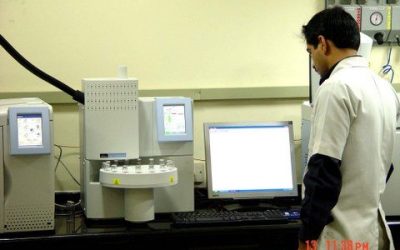
The 2013 Horse Meat Contamination scandal is an ongoing controversy regarding meat sold in Europe being advertised as beef, despite containing up to 60–100%horse meat and other meat products such as pork.
Meat Contamination with a cheaper one has become a matter of concern for research workers and has prompted the researchers to find a suitable method for the detection of the species origin of meat in food products.
The Meat contamination issue first arose in Ireland when the test was conducted by the Food Safety Authority and found that frozen beef sold by the supermarket chain of Tesco, Asda, Dunnes Stores, Lidl, Aldi and Iceland containing 29 percent horse meat DNA. The issue widened last week when further tests revealed: “gross contamination” of frozen beef products sold under the Findus brand in the UK, France, and Sweden, including beef lasagnes that were found to contain up to 100 percent horsemeat. Many believe financial gain is the motive for the fraud as horsemeat is cheaper than other meats in some countries.
Meat contamination in ground and comminuted products has been a widespread problem in retail markets. Identification of the species origin in meat samples is relevant to consumers for several reasons: (a) possible economic loss from fraudulent substitutions or adulterations, (b) medical requirements of individuals who might have specific allergies, and (c) religious reasons.
The conventional methodology used for the determination of species origin in meat products had been predominantly based on immunochemical and electrophoretic analysis of protein. Additionally, through the acquisition of sequence data, DNA can potentially provide more information than protein, due to the degeneracy of the genetic code and the presence of many non-coding regions. Recently, DNA-based techniques were widely utilized due to stability at high temperature and highly conserved structure of DNA within all tissues of an individual.
DNA hybridization was the DNA-based technique employed successfully for differentiation of meat species is quite reliable and sensitive, but it is a complicated and time-consuming technique so that DNA hybridization has been replaced by PCR-based techniques easily amplifies target regions of template DNA in much shorter time.
The European Commission has proposed increased DNA testing of meat products to assess the scale of a scandal. European Union agriculture ministers agreed on a 3-month programme of DNA testing of processed meat across the European Union with an initial testing plan to check the harmful equine medicine residues as widely used veterinary painkiller phenylbutazone (bute) which can cause a serious blood disorder to humans in rare cases.
Arbro Analytical Division is focused on the use of singleplex and multiplex PCR using cytochrome b gene and other primer genes for rapid detection of meat contamination and identification of meat species from cattle, buffalo, sheep, goat, pig, chicken, and horse.
PCR methods for the detection of horse meat in retail meat products have been developed with the detection limit of 0.1% horse meat in the meat mixture. The primer pairs PCR were designed for the region of horse mitochondrial ATPase subunits 6.
If you wish to avail the service or need any further information about this, please feel free to contact us using the quick query form on the right or call us now on +91-11-45754575!

















2 Responses
We want to get biriyani tested for its meat species content . we prepared chicken biriyani on saturday. a small portion of lamb got mixed by mistake .
we have to prove to our patrons that there is no beef and it was indeed lamb which got mixed
.can you identify the species for me ?and what would be the cost.?
Yes we can do this analysis for you, our team will provide you a quote shortly.